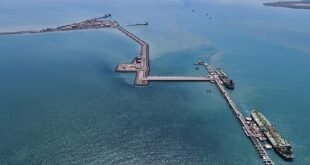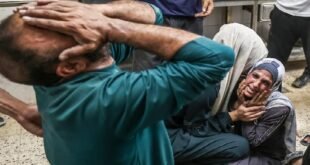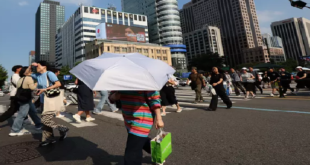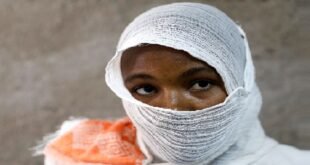15-03-2023
PARIS: Police use of rubber bullets and other projectiles against peaceful protesters has become increasingly routine worldwide, leading to many eye injuries and even deaths, Amnesty International warned on Tuesday.
The London-based group called for better global regulation of the trade and use of such policing equipment, also called “less lethal weapons”, after research in more than 30 countries over the past five years.
 “Thousands of protesters and bystanders have been maimed and dozens killed by the often reckless and disproportionate use of less lethal law enforcement weaponry,” it said in a new report titled “My Eye Exploded”.
“Thousands of protesters and bystanders have been maimed and dozens killed by the often reckless and disproportionate use of less lethal law enforcement weaponry,” it said in a new report titled “My Eye Exploded”.
These included rubber bullets, rubberized buckshot, and tear gas grenades fired directly at demonstrators in south and Central America, Europe, the Middle East, Africa, and the United States.
“There has been an alarming increase in eye injuries, including eyeball ruptures, retinal detachments and the complete loss of sight,” Amnesty said.
In Chile alone, the police’s response to protests from October 2019 caused more than 30 cases of eye loss, according to the country’s National Institute for Human Rights.
Other demonstrators in countries surveyed had also suffered bone and skull fractures, brain injuries, the rupture of internal organs, or punctured hearts and lungs from broken ribs, it added.
Demonstrators have also been killed, the report co-written with the UK-based Omega Research Foundation found.
 In Iraq, security forces deliberately fired specialist grenades that are 10 times heavier than typical tear gas munitions at protesters, causing at least two dozen deaths in 2019, Amnesty said.
In Iraq, security forces deliberately fired specialist grenades that are 10 times heavier than typical tear gas munitions at protesters, causing at least two dozen deaths in 2019, Amnesty said.
In Spain, the use of tennis-ball-sized rubber projectiles has led to at least one death from head trauma, according to the campaign group Stop Balas de Goma.
“Legally-binding global controls on the manufacture and trade in less lethal weapons… along with effective guidelines on the use of force are urgently needed to combat an escalating cycle of abuses,” said Amnesty International’s Patrick Wilcken.
Meanwhile, Israeli troops in the West Bank wounded 15 Palestinians with rubber bullets Friday in clashes marking 20 years since the start of the second intifada, the Palestinian Red Crescent said.
The incident took place in the village of Kfar Qaddum, near Nablus in the north of the occupied territory, it said, adding that four of the injured were taken to hospital and the others treated on the spot.
The Red Crescent told media that it had also aided “dozens” of protesters who inhaled tear gas fired by Israeli forces.
 The Israeli army said it had no knowledge of clashes in the village.
The Israeli army said it had no knowledge of clashes in the village.
Bearing Palestinian flags, a few hundred demonstrators gathered there in the early afternoon, a journalist at the scene said.
Protests against more than five decades of Israeli occupation are a regular weekly occurrence in the West Bank.
Friday’s demonstrators also marked the outbreak of the Palestinian uprising which followed late Israeli prime minister Ariel Sharon’s contentious visit to the Al-Aqsa mosque compound on September 28, 2000.
The second intifada ended in February 2005, after the deaths of some 4,700 people, nearly 80 percent of them Palestinians.
Palestinian officials, including the vice-chairman of the Fatah party Mahmoud al-Alul, participated in Friday’s marking 20 years since the start of the second intifada, the Palestinian Red Crescent said. (Int’l News Desk)
 Pressmediaofindia
Pressmediaofindia




